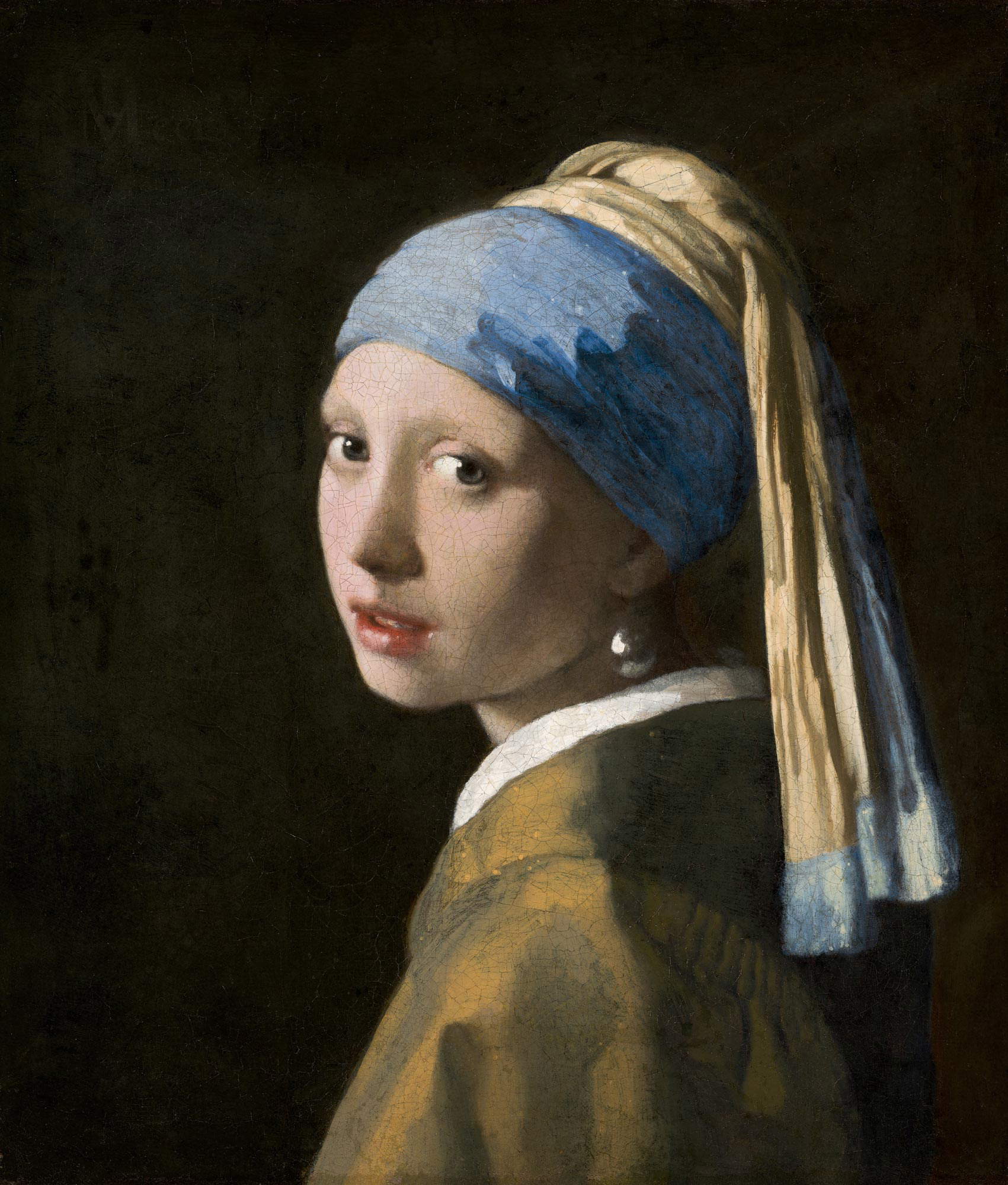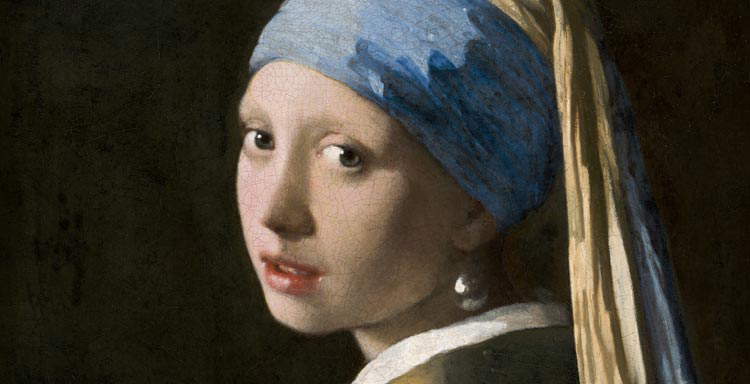This young girl stares at the concerning with her liquid eyes and half-open mouth and in the process radiates purity, drawing all gazes to her. Her soft, smooth skin is as spotless as the surface of her large, tear-shaped pearl earring. Like a vision emanating from the darkness, she belongs to no specific time or place. Her exotic turban, which wraps her head in crystal blue, is topped with a striking yellow fabric that falls dramatically behind her shoulder, lending an air of mystery to the image.
Dating this extraordinary image has proven difficult, not only because the costume has no parallels with contemporary Dutch fashion, but also because the painting is very different conceptually from Vermeer’s late 1950s and early 1960s interior genre scenes. An attempt to date the painting to the 1970s through the identification of the model as Maria, the oldest of Vermeer’s children, is not convincing. In none of his paintings from the 1970s does Vermeer achieve the softly diffused flesh tones evident here, created by superimposing a thin flesh-colored paint over a transparent model. Vermeer developed this technique for rendering flesh tones during the mid-1960s [...] and exploited it in Girl with a Pearl Earring, using it in an even bolder and more expressive way. The soft contour of the girl’s face spreads a warmth that permeates the image. To enliven her face, Vermeer placed light accents in her eyes and, as discovered in the 1994 restoration of the painting, accentuated the ends of her mouth with small dots of pink paint. The free and surprisingly bold application of blue glazes in the turban further contributes to the sense of immediacy.

The expressive nature of Vermeer’s application of paint is surprising, given the care with which he drew his works. It also distances his style from that of several of his contemporaries, including Frans van Mieris, who painted comparable subjects but in a meticulous manner rooted in an entirely different tradition. Vermeer’s broad manner of generalizing forms and suggesting the subtle nuances of light falling on surfaces is a fundamental aspect of his classicism, the origins of which can be traced in his paintings of historical subjects. The Girl with a Pearl Earring shows another aspect of the classicism that pervades Vermeer’s work [...]: timelessness. Against a dark, undefined background, and dressed in an exotic costume, this striking young woman cannot be placed in any specific context. She possesses no attributes that could, for example, identify her as an allegorical figure, be she a muse or a Sibyl. Almost certainly, however, it is precisely this absence of historical or iconographic context that conveys such immediacy to all who view her.
Although this work shares fundamental relationships with Vermeer’s other paintings, it is nonetheless different in many ways. It is the first to focus on a single figure against a somber background. The scale of the head is larger and the image is closer to the picture plane than in any other scene of its kind. Although it is entirely possible that Vermeer had arrived at this compositional solution on his own, the stylistic connections with Michael Sweerts’ paintings are so striking that the possibility of contact between these two artists should be raised, especially since Sweerts was living in Amsterdam in 1660-1661. Sweerts, who had been an assistant at the Accademia di San Luca in Rome, and who had founded an academy of life drawing in Brussels after his return to his hometown around 1656, shared with Vermeer the idea of giving classical dignity to scenes of everyday life. During his stay in Amsterdam, Sweerts painted a series of busts of young people with equally pure profiles against dark, undefined backgrounds. All look out of the painting with moist, shiny eyes, and at least one wears an exotic turban. Despite the absence of documented contact between the two artists, Vermeer may have seen Sweerts’ paintings in Amsterdam, where he had contact for much of his life.
---
Arthur K. Wheelock and Ben Broos in Arthur K. Wheelock (ed.), Johannes Vermeer, exhibition catalog (Washington, National Gallery, November 12, 1995 to February 11, 1996, and The Hague, Mauritshuis, March 1 to June 2, 1996), The National Gallery of Art, Washington, 1995, pp. 166-168. Translation from English by the editors of Finestre Sull’Arte.
 |
| Supercult. Arthur Wheelock and Ben Broos on Jan Vermeer. |
Warning: the translation into English of the original Italian article was created using automatic tools. We undertake to review all articles, but we do not guarantee the total absence of inaccuracies in the translation due to the program. You can find the original by clicking on the ITA button. If you find any mistake,please contact us.